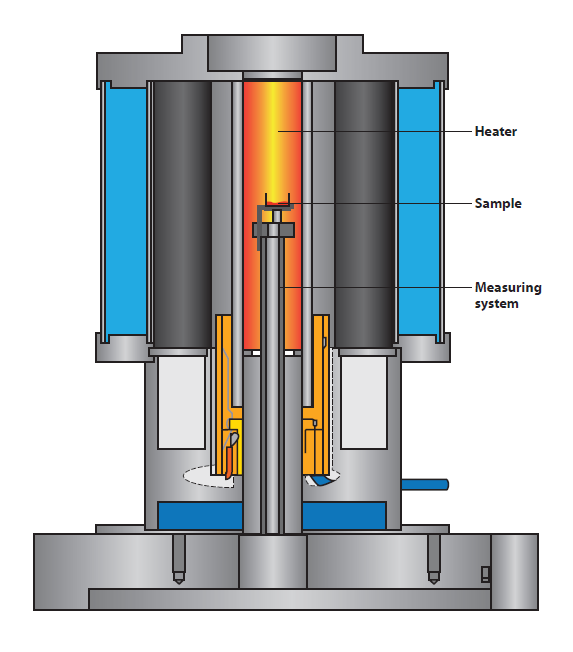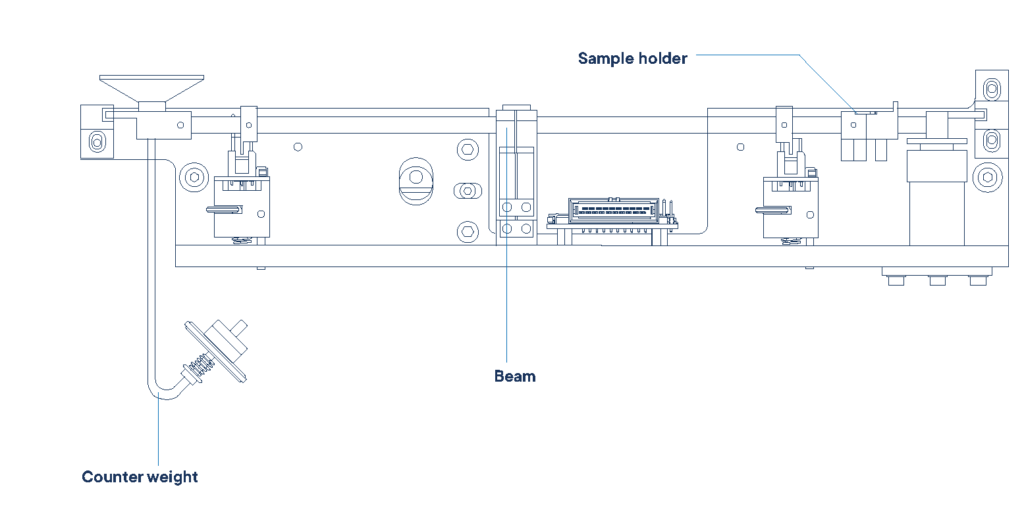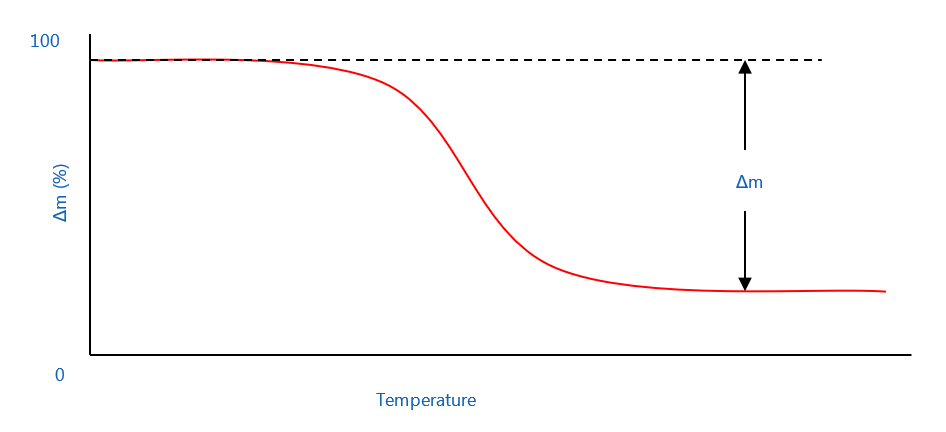Thermogravimetry
What is thermogravimetric analysis?
Thermogravimetry or thermogravimetric analysis is an analytical method that records the mass change by temperature of a sample that is facing a controlled temperature profile. The sample can undergo heating, cooling or isothermal steps. The resulting measurement signal usually gives the absolute mass change in [mg] and relative mass change in [%].
The setup of thermogravimetry:
For classic thermogravimetry, a sample is usually put into a crucible out of inert material (e.g. platinum, alumina, gold…) and placed on a sensor within a furnace that can apply controlled atmospheres and temperatures (scheme 1).

Sensor Setup in a typical thermogravimetric analyzer
The sensor is connected to a high-resolution microbalance that records the mass change during the experiment. In most thermogravimetric analyzers, compensation balances are used for this purpose (scheme 2).
High precision beam balance

A compensation balance is a special version of a balance where an electric magnet compensates the applied mass by an electromagnet. In detail, the magnet compensates the force of weight as mass is defined by the formula:

As the gravity is usually known due to calibration or if a counterweight is used like in a bar setup, the force of weight can give the mass directly. Besides thermogravimetric analyzers, also lab balances often work according to the same principle.
While the sample is seeing a heat change, the balance is usually kept in a static temperature environment like a separate chamber or at a certain distance from the sensor.
The exact temperature of the sample is monitored by thermocouples that use the Seebeck-effect for precise temperature determination. Scheme 3 shows a typical thermogravimetric measurement (relative weight change vs. temperature).

Typical thermogravimetric result curve
What is thermogravimetry used for?
Thermogravimetry is used in many industries as well as research. Ceramic industries, chemistry, polymer and building industries as well as energy storage, battery research and oil industry uses thermo gravimetric analyzers. Typical applications are the general investigation of thermal decomposition, ash or organic content determination, gravimetric sorption studies, thermal stability and oxidation studies, material analysis and many more. There are also special fields like nuclear research or high-pressure process studies that are using this technique.
Thermogravimetry is a key part of thermal analysis in general, following the international standards ASTM D 3850, E 914, E 1131, E 1868, DIN 51006 and ISO 7111, ISO 11358.
